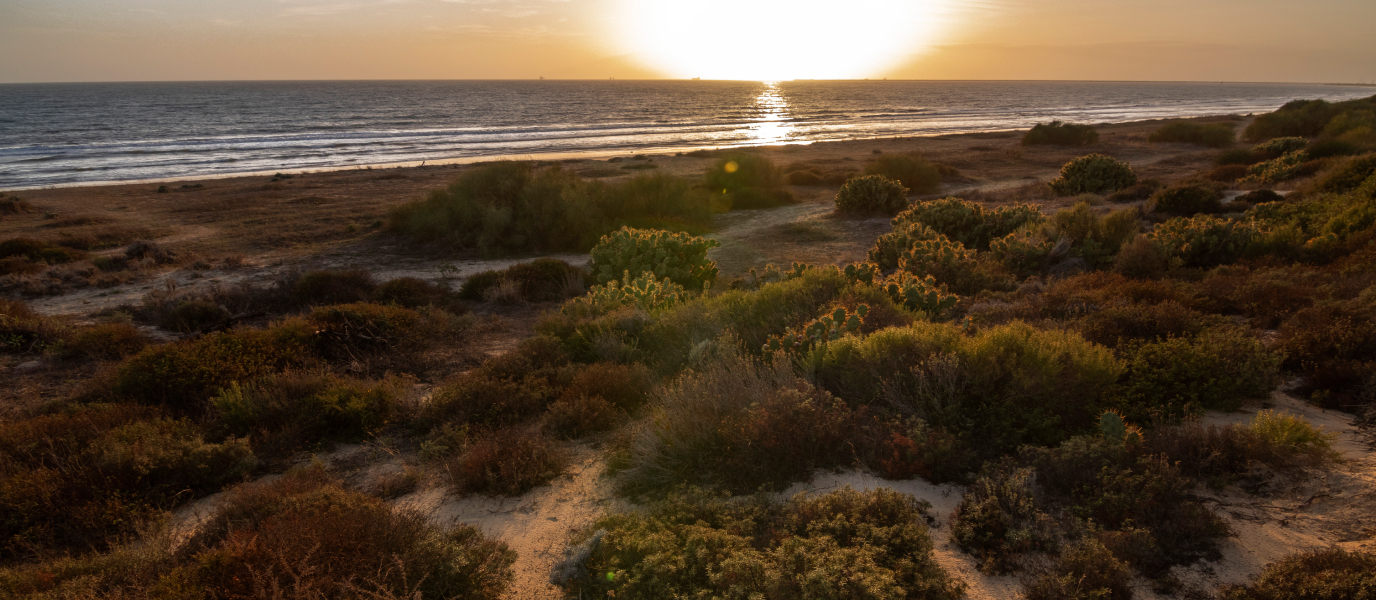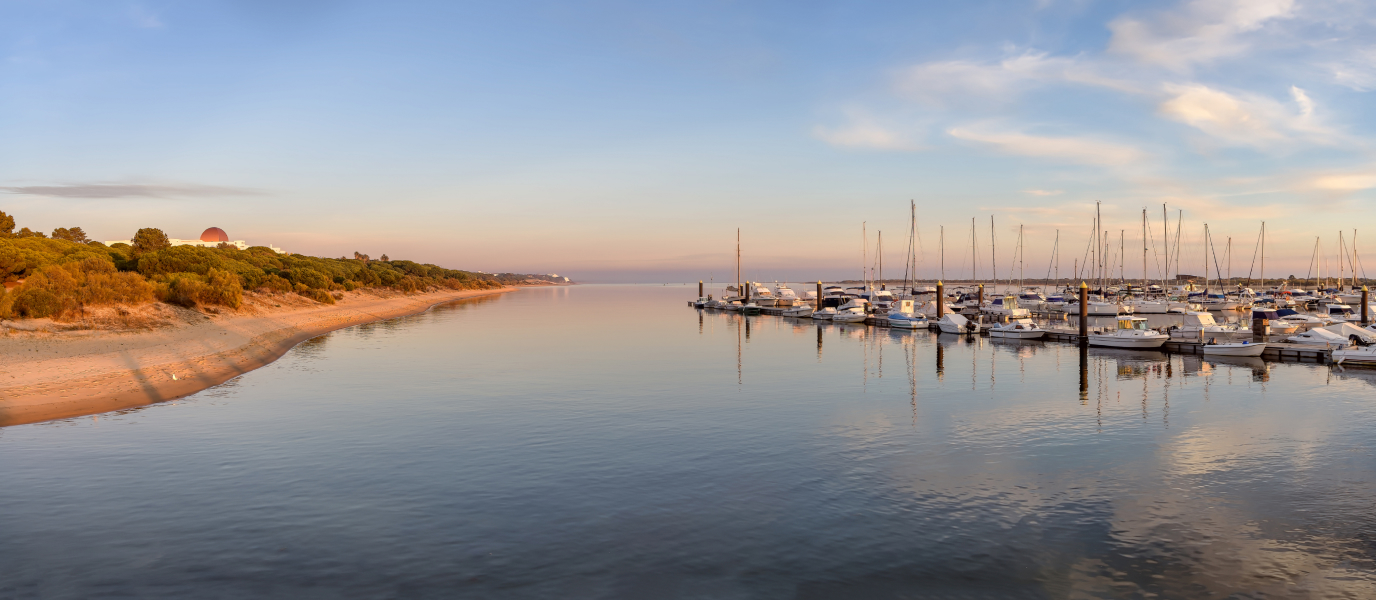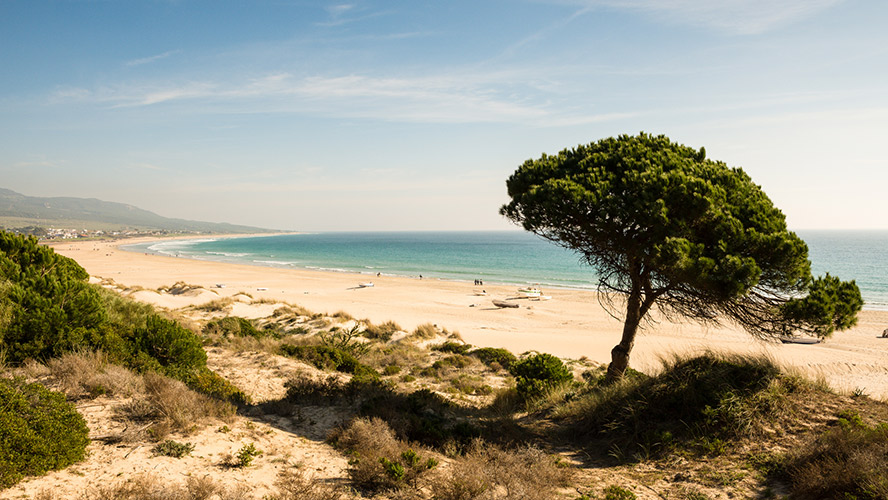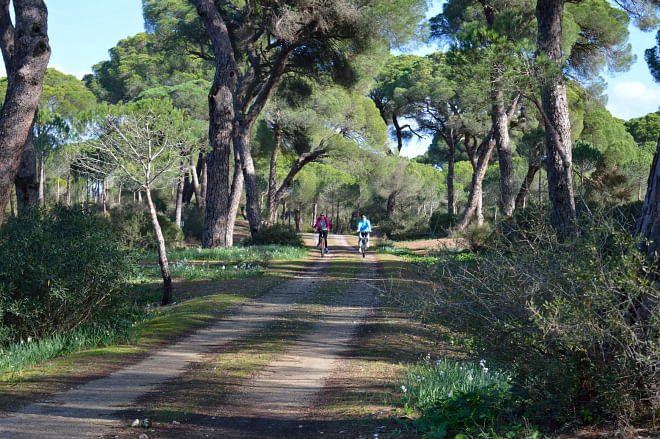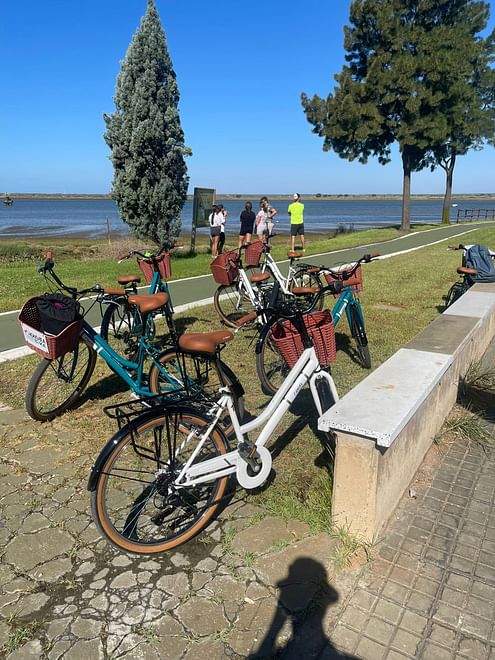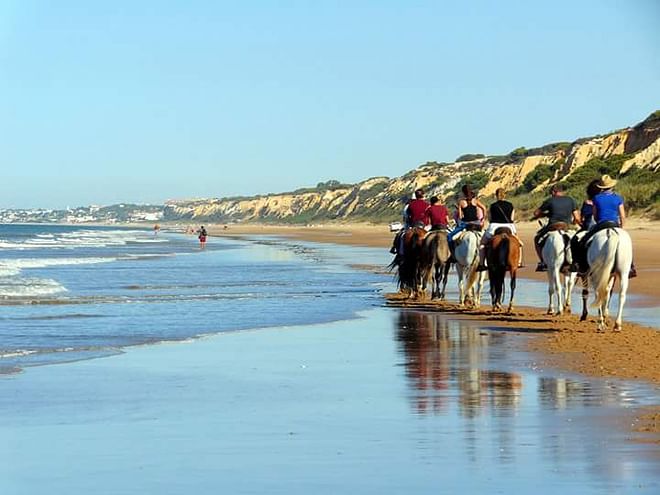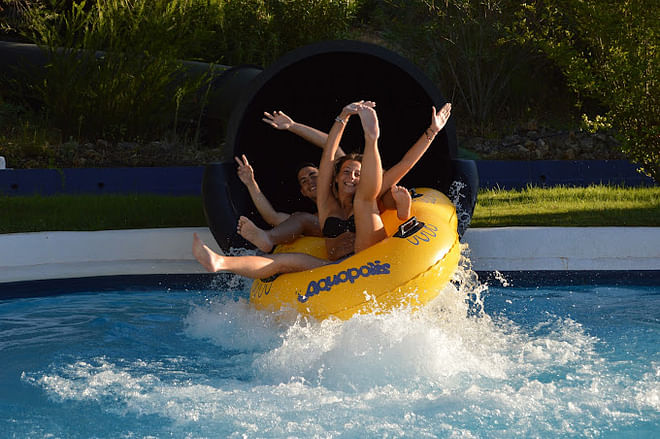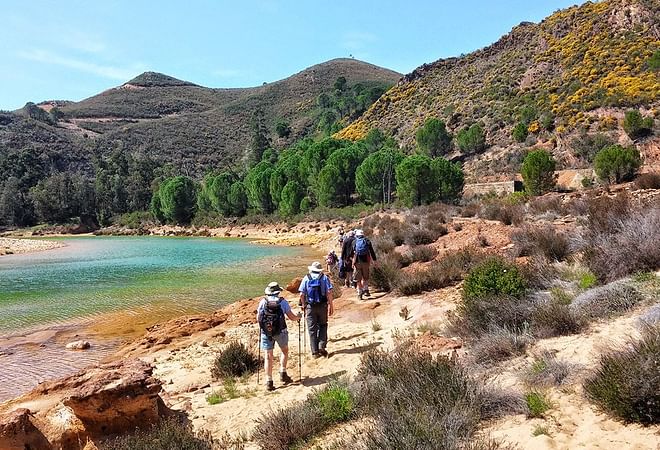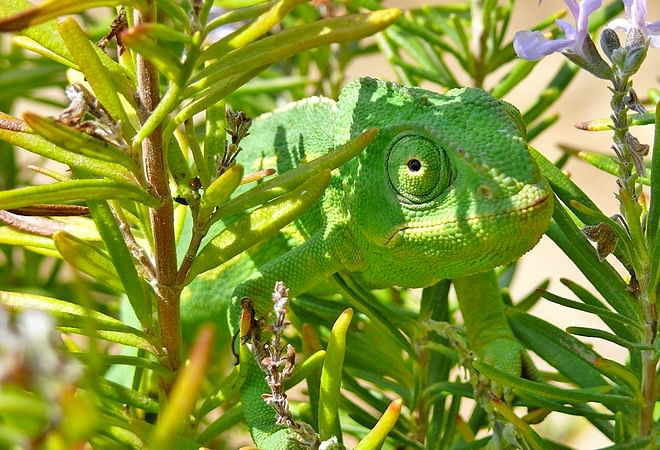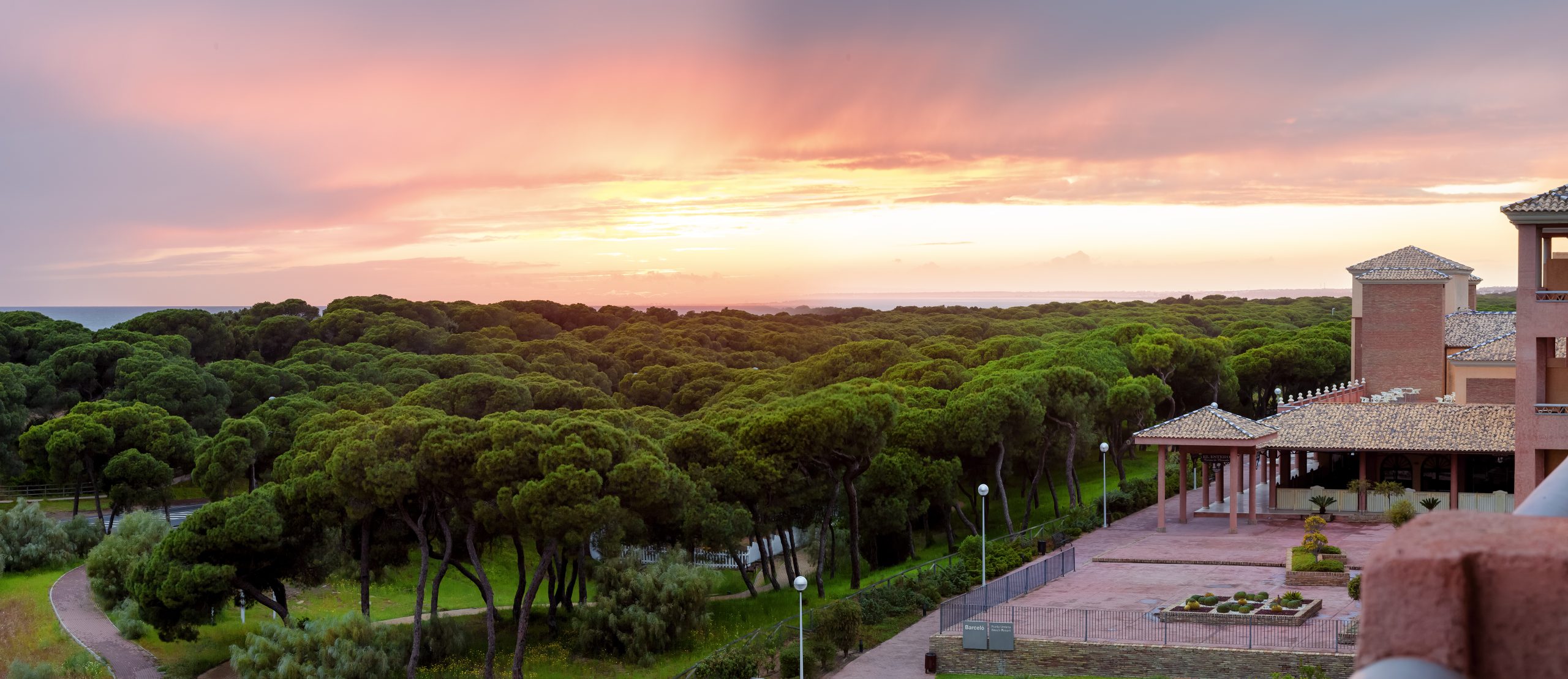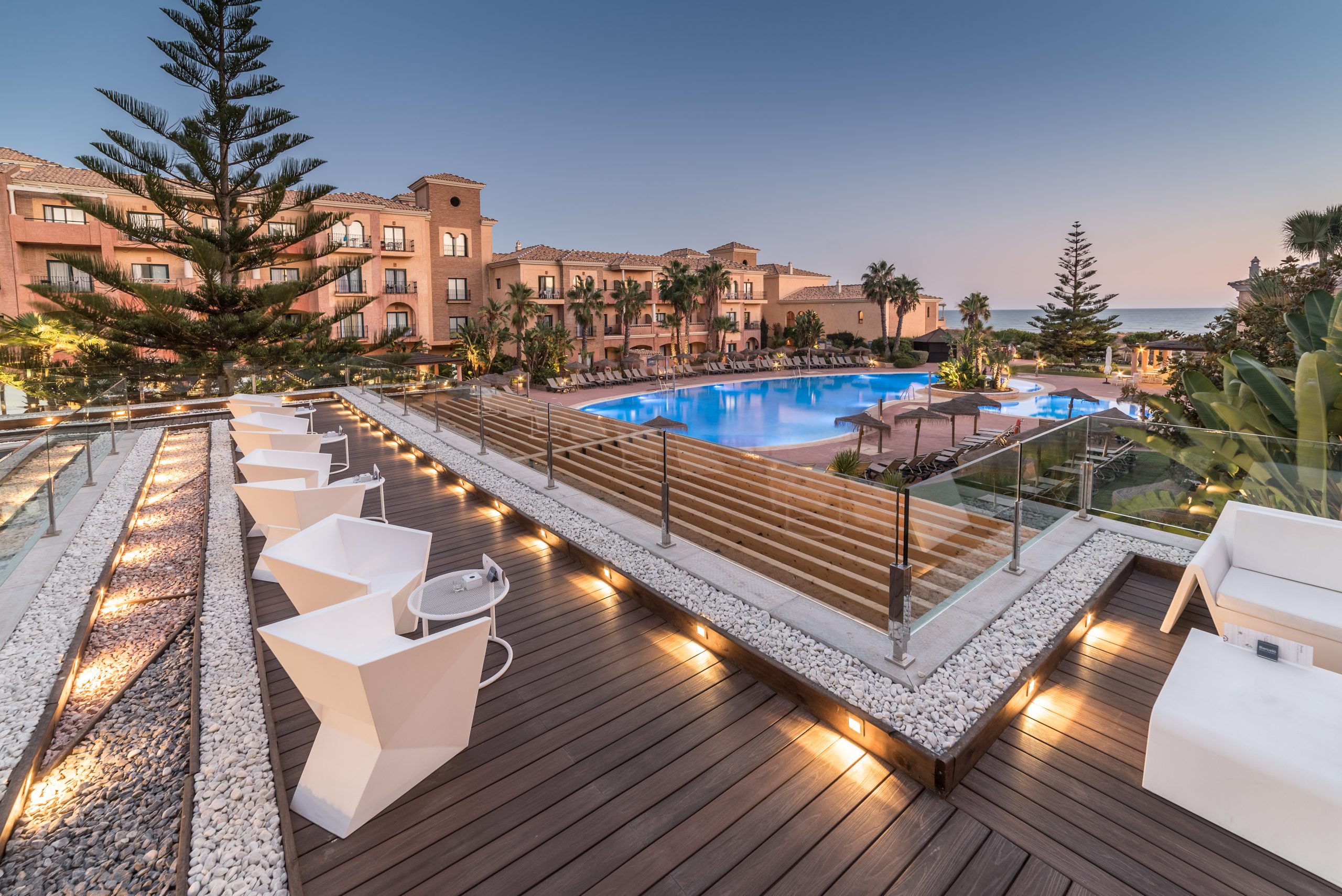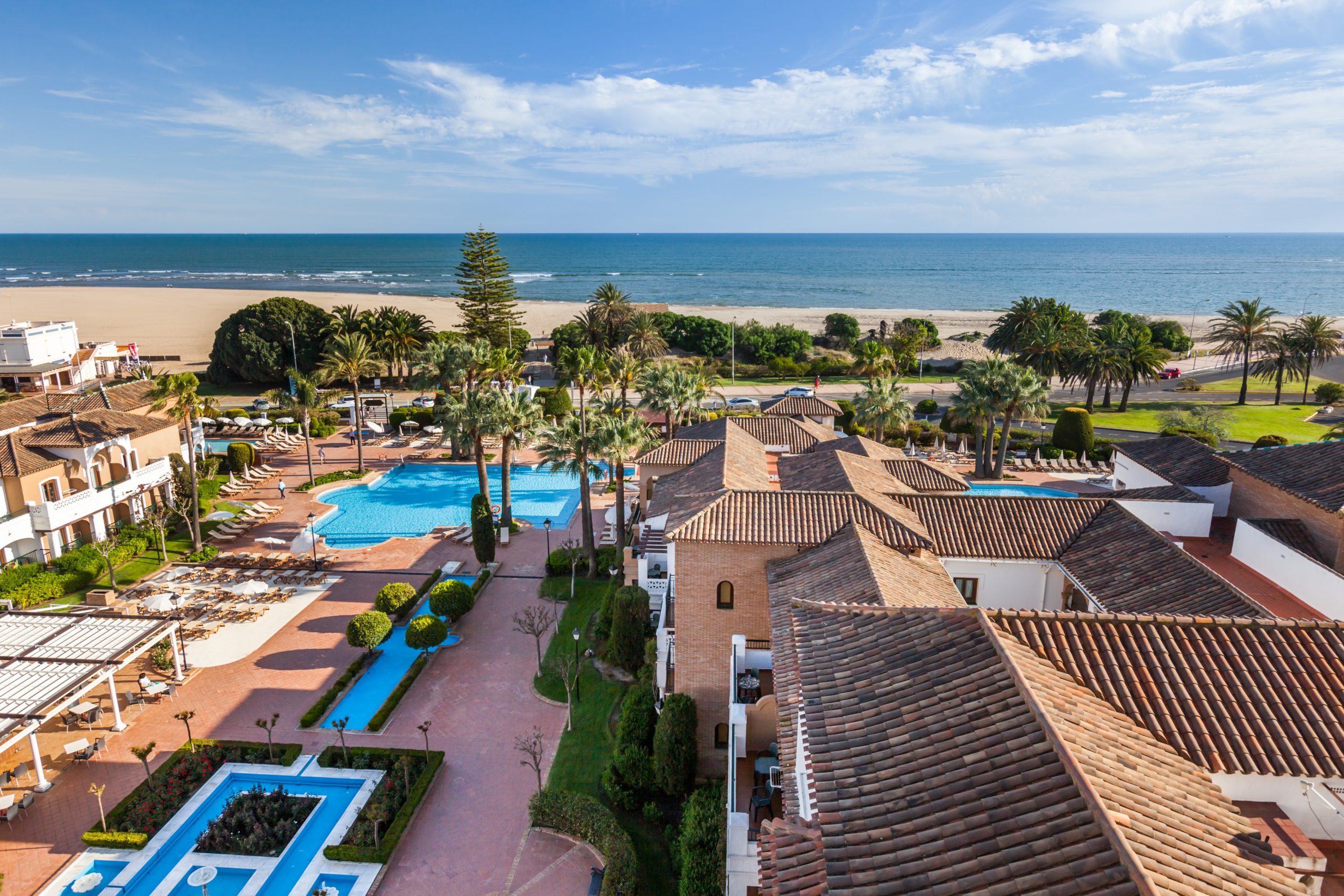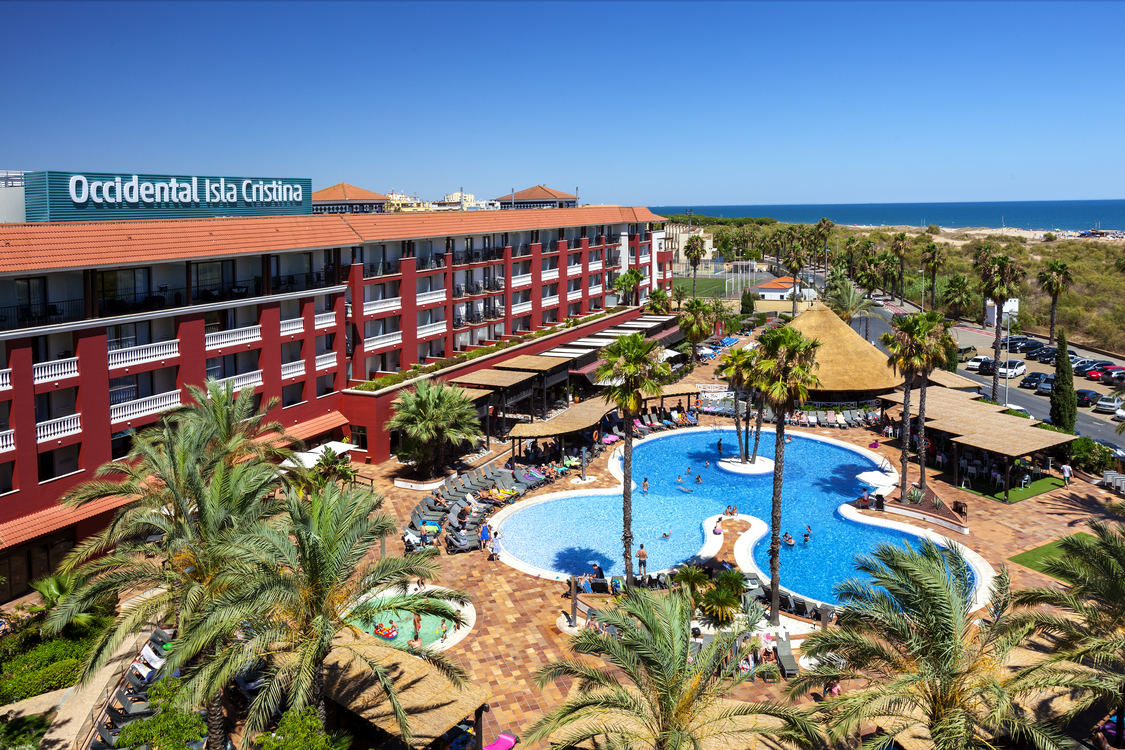The province of Huelva is one of the biggest tourist lures in Andalusia on account of its coastline with protected natural areas and gorgeous beaches. From the Doñana National Park to the River Guadiana, on the border with Portugal, practically all of Huelva’s coastline is a beach of some description. In this article we share a selection of the best beaches in Huelva so that you won’t miss a thing during your trip to the province.
Huelva’s coastline is one long series of sandy stretches and a haven for biodiversity. There are more than 120 km of beaches along the Costa de la Luz. Here’sour pick
Playa de Punta Umbría
Punta Umbría is a dagger-shapedlandformation in the Paraje Natural de las Marismas del Odiel. The entire Atlantic edge is a vast sandy beach called Playa de Punta Umbría.
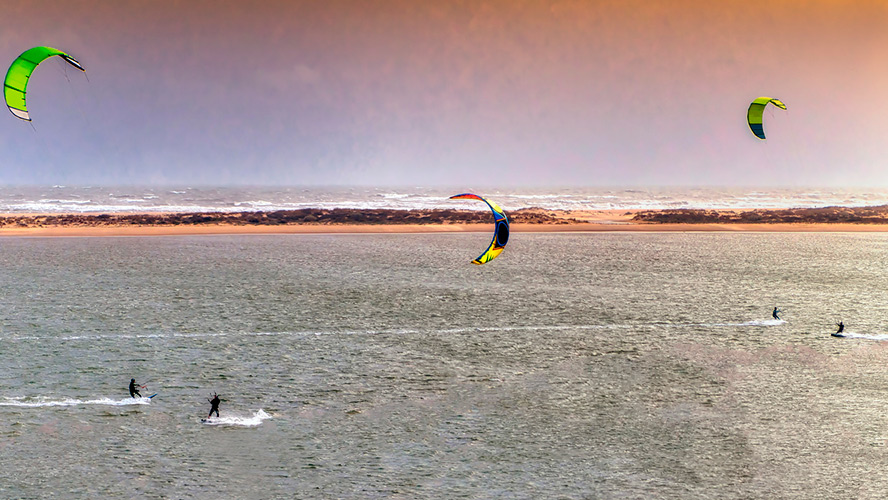
Itis equipped with the most facilities thanks to its urban location. Conditions are great here for windsurfing. Access to the beach is obstacle-free and there are laid-back beach bars with live music, such as the Mosquito Club.
About Playa de Punta Umbría
- Length: 3,800 metres
- Width: 50 metres
- Type of sand: golden
- Access: good
Playa del Rompido
If you follow the stretch of sand that starts at Punta Umbría you’ll reach the beach at El Rompido, a fishing town which only fairly recently has started to see tourism-related developments. In front of El Rompido is a 12-kilometre bar of land with beach on one side, transforming the coastline at the mouth of the River Piedras into an estuary. This is the Flecha del Rompido (El Rompido Arrow), and you can get to it by boat.
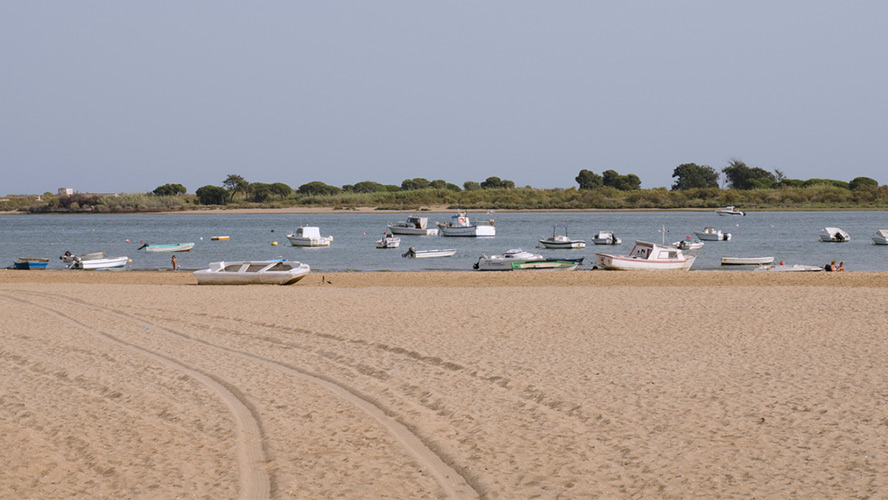
There are around 300 metres between the Flecha and Playa del Rompido with its small fishing town. There are plenty of boats anchored in this sheltered stretch of water, and the access limitations make this corner of Huelva really special.
About Playa del Rompido
- Length: 3,600 metres
- Width: 40 metres
- Type of sand: fine and golden
- Access: good (urban)
Playa de Isla Canela
The last beach before meeting the mouth of the River Guadiana – a natural border with Portugal – is Playa de Isla Canela. We’re now in the municipality of Ayamonte.
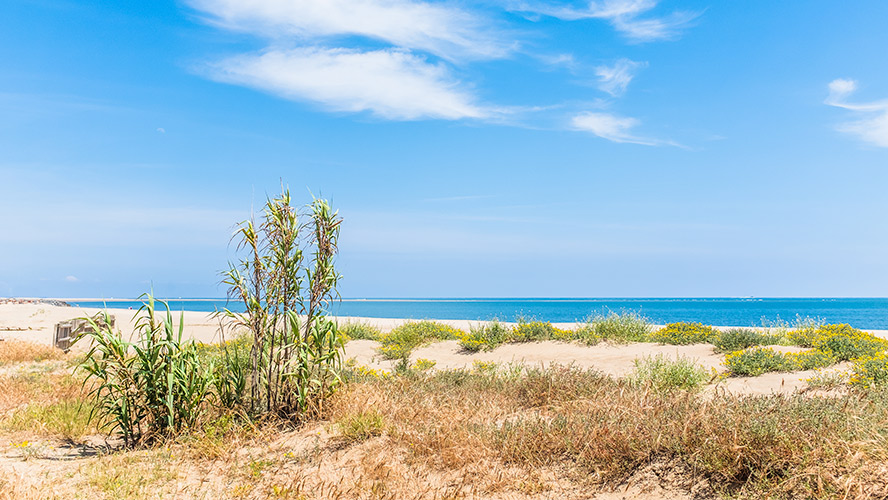
This is one of the prettiest beaches on the Costa de la Luz. The beach straddles a point where the Atlantic meets the waters of the Guadiana, and the environmenthere is shaped by marshes and channels. This place isn’t just about the beach but about savouring the natural surroundings.
Together with neighbouring Playa de los Haraganes you can enjoy more than 5 km of beach.
About Playa de Isla Canela
- Length: 1,500 metres
- Width: 40-150 metres (varies)
- Type of sand: fine and golden
- Access: good
Playa de Matalascañas
We now move from Huelva’s eastern extreme to the west and the Parque Nacional de Doñana, an immensely valuable national park that opens up to the sea at Playa de Matalascañas. This vast straight beach stretching more than 4 km is one of the main summer attractions along Andalusia’s Atlantic coast. The sheer size of the beach prevents overcrowding and means you’ll always find a spot.
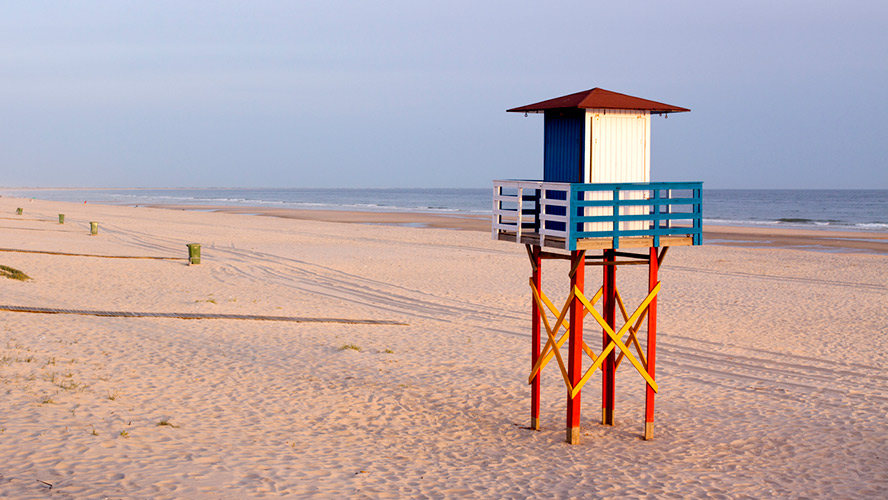
Matalascañas has different zones: the central area, by the village itself, has all the features of an urban beach including a promenade, beach bars, sports and easy access; the natural sands at either side back onto dunes linking the coastline with the national park. In Matalascañas, the Atlantic really opens up in front of you.
About Playa de Matalascañas
- Length: 4,200 metres
- Width: 80 metres (varies)
- Type of sand: fine and golden
- Access: adapted access points
Playa del Portil
Lying between El Rompido and Punta Umbría is the town of El Portil. Its beach is more than 3 km long and situated just in front of the end of the Flecha del Rompido and the mouth of the River Piedras. Here, the wind and the tides create sand formations that constitute a natural bridge between both sides of the estuary.
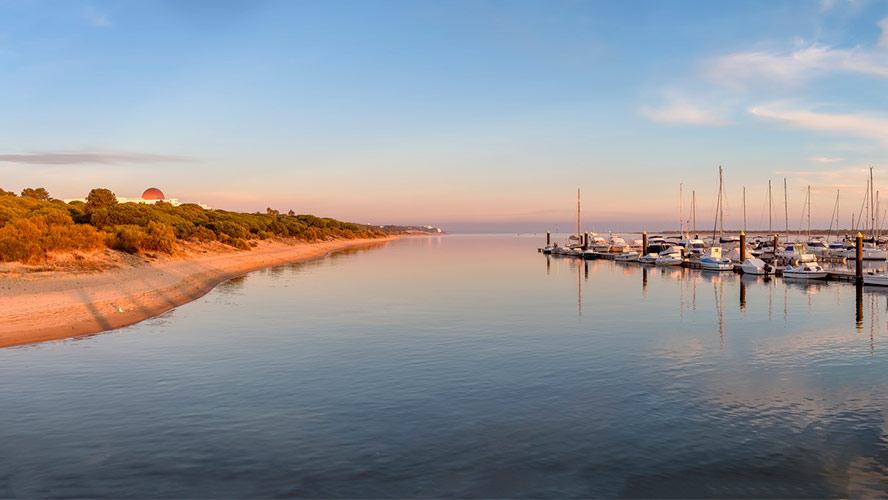
The more inland section of Playa del Portil is slightly wider and has a marina afforded protected by the Flecha. Further out, the beach is narrower. The waters all along the beach are calm, however.
There are still remains here of bunkers built during the Franco dictatorship in fear of an allied invasion during the Second World War. Behind the beach, the Laguna del Portil is also worth exploring. In short, El Portil is a gorgeous natural space offering the chance to combine beach life with nature.
About Playa del Portil
- Length: 3,600 metres
- Width: 40 metres (varies)
- Type of sand: fine and golden
- Access: adapted access points
Playa de Mazagón
Welcome to one of the longest beaches in the province of Huelva. The beach itself and the small settlement behind are part of Moguer and Palos de la Frontera, both a few kilometres inland.
This is an accessible, urban beach. At one end, the widest area merges with the breakwater at the marina. At the other end, the beach gets back to nature with dunes, pine trees and a cliff-like natural wall along the entire stretch of sand.
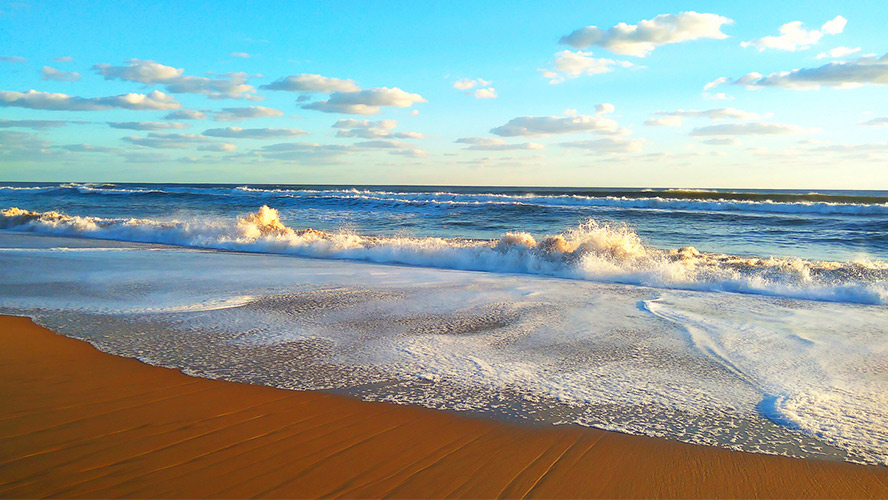
Playa de Mazagón is generally peaceful and ideal for young and old alike. Its 9 km of sand are splitintovariouszones: Playa del Vigía, Playa de las Dunas, Playa de la Fontanilla, Playa del Parador and Playa de Rompeculos. There’s a place for everyone on this spectacular beach.
About Playa de Mazagón
- Length: 9,000 metres
- Width: 80 metres (varies)
- Type of sand: golden
- Access: adapted access points
Playa de Cuesta Maneli
Playa de Cuesta Maneli (part of Playa de Mazagón) is possibly one of the wildest and most natural beaches along the entire coast of Huelva. You’ll find it just before you reach Matalascañas. It’s gay friendly, pet friendly and nudist friendly, and it doesn’t usually get overrun with people. You’ll find one beach bar and nothing else.
Access from the A-494 road constitutes more than a kilometre of trails and walkways over dunes and cliffs. Make sure to savour the beauty of the place. (Note: A fire in 2017 devastated inland Mazagón and also damaged this zone, resulting in the closure of access points to the beach. Check before you visit).
About Playa de Cuesta Maneli
- Length: 1,500 metres
- Width: 50 metres
- Type of sand: fine and golden
- Access: adapted access points
Playa de Islantilla
Playa de Islantilla runs along the stretch of coastline taking in the municipalities of Lepe and Isla Cristina, in the extreme west of Huelva. The long beach is exposed to the Atlantic and adjacent to a popular built-up area which creeps onto the sand.
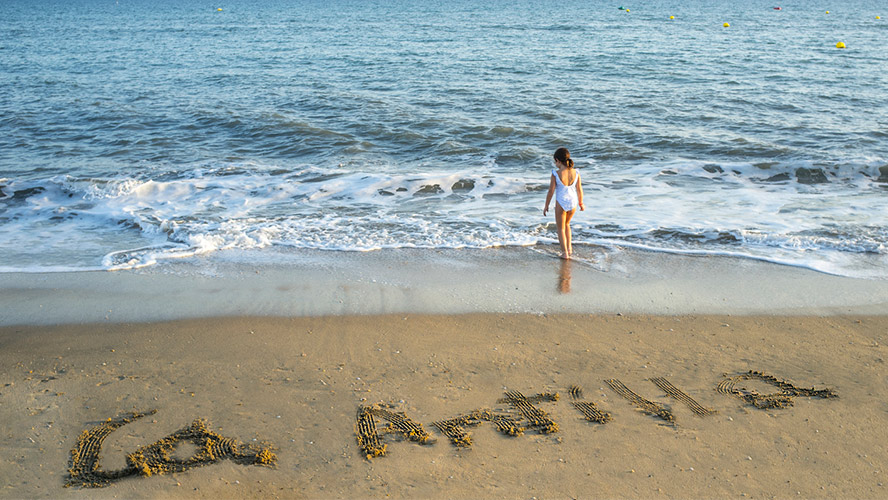
Islantilla has several facilities and is ideal for families. Bear in mind that’s it’s one of the most popular beaches along Huelva’s coast. The waves here are moderate, so take care.
About Playa de Islantilla
- Length: 1,600 metres
- Width: 60 metres
- Type: fine golden sand
- Access: adapted access points
Playa de la Punta del Caimán
One of the beaches at Isla Cristina is Playa de la Punta del Caimán complete with a long breakwater protecting it from the mouth of the River Carreras. The waters around the Punta del Caimán form a sort of shallow inland lake with a sandy bottom.
A sand bar called the Isla de la Gaviota encloses the beach at the other end. You can get to it along a wooden jetty from the Punta del Caimán. So really, you have two beaches to enjoy, with a lake in the middle. This protected area is part of the Paraje Natural de las Marismas de Isla Cristina.
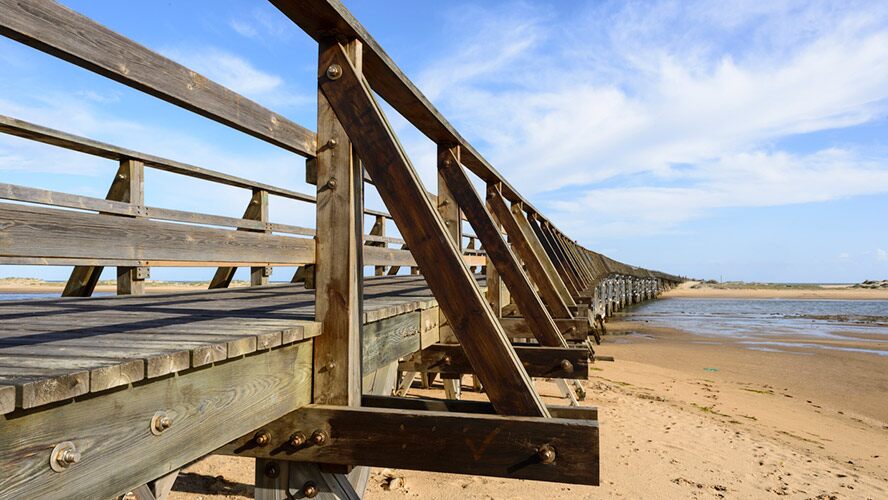
The protection afforded by the breakwater and Playa de la Gaviota means there are no waves at Playa de la Punta del Caimán and the waters are warmer than on beaches exposed to the Atlantic. It’s not usually crowded despite being right in the town of Isla Cristina. It’s also great for kids – they’ll have fun playing around in the shallow waters.
About Playa de la Punta del Caimán
- Length: 2,000 metres.
- Width: 75 metres.
- Type: fine and white/golden sand
- Access: urban




































































